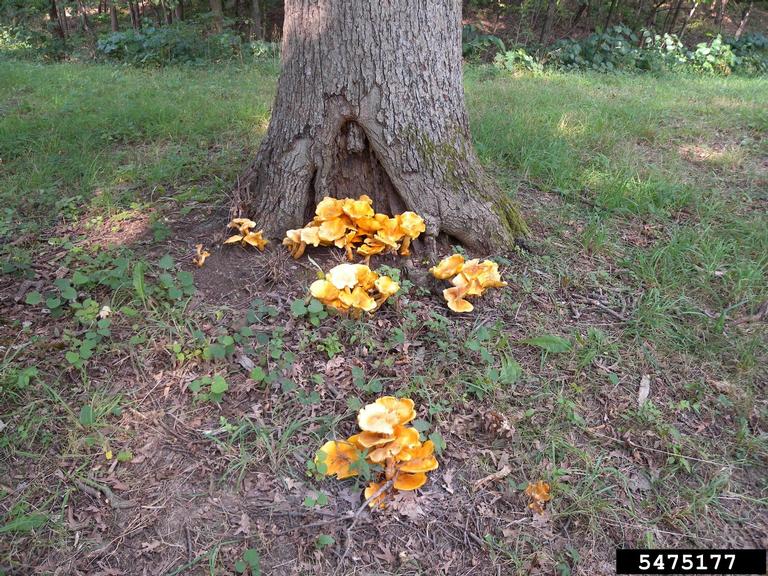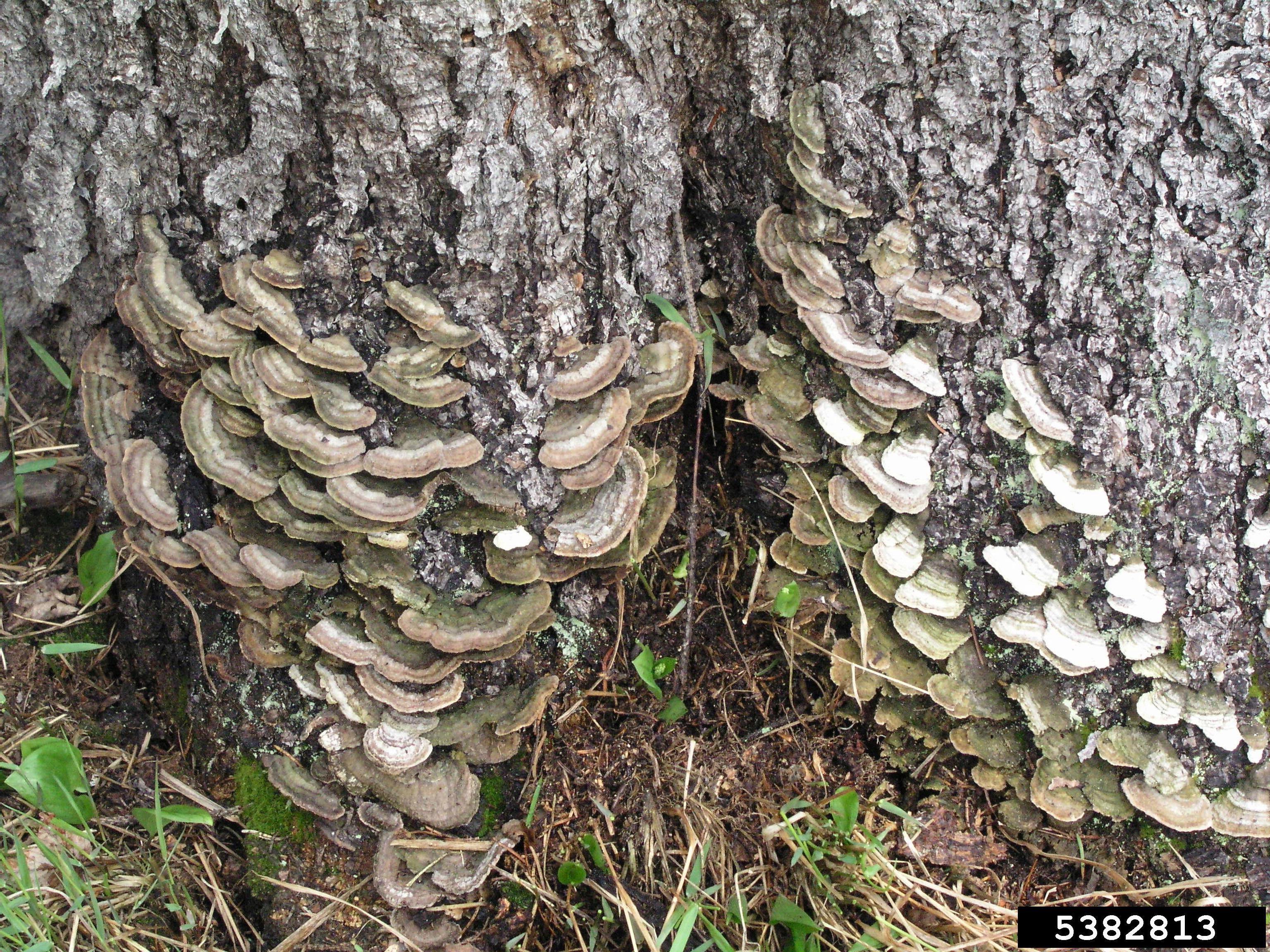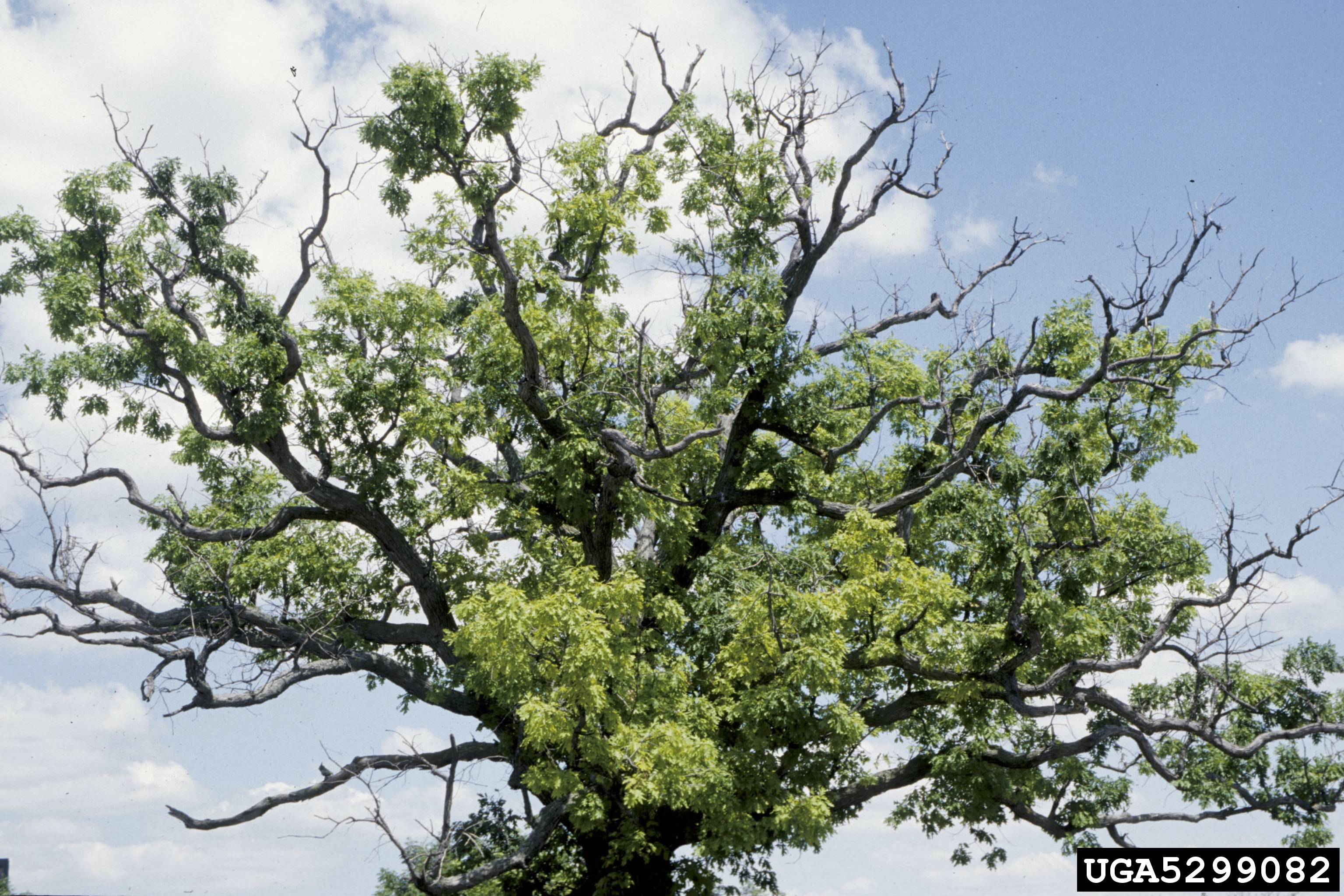All trees eventually die. Trees are living organisms, and like other living things, they are subject to injury, disease, and death. Different tree species have different life spans. Under normal forest conditions, a red maple (Acer rubrum) may live about 100 years, while a white oak (Quercus alba) averages 300 years.
Trees do not typically die overnight, but decline over several years, entering a slow death spiral. Once a tree has entered a death spiral, little can be done to remediate the situation.
Tree lifespans may be shortened as a result of external pressures present in home landscapes and urban settings. It is not unusual for mature trees in home landscapes to display signs of stress or decline. Signs to look for include tip dieback, leaf or needle yellowing or browning, leaf or needle defoliation, leaf shedding, undersized leaves, and thin crowns or canopies. For example, native dogwood trees are naturally adapted to grow in the forest understory or in partly shaded areas. Because of their showy spring flowers, they are often planted and grown in full sun areas. Under these conditions, dogwoods become more susceptible to drought and environmental stresses that will eventually lead to a shorter lifespan.
To conduct a visual evaluation of a tree’s health and inspect for any safety concerns, carefully observe and examine all parts of the tree. The evaluation must include the visible roots, trunk, limbs, and leaves.
Tree Health Evaluation
Begin at the base of the tree and inspect the root system and root flare of the trunk. Are there fungal bodies (mushrooms or conks) growing on the ground around the root system (Figure 1) or on the tree’s trunk? If yes, these are signs of severe or advanced rot in the tree’s trunk or root system. Root decay cannot be reversed or corrected, and its presence causes a tree to be less physically stable. If its root system is compromised, the tree will decline, or even worse, fall. Root decay is a sign that a tree is well into its death spiral.

Figure 1. Fungal fruiting bodies at the root system of a tree are an indicator of root decay (Photo by Stephanie M. Adams, The Morton Arboretum, Bugwood.org)
Look at the trunk flare at the base of the tree.
Healthy trees are wider at the base where they meet the ground (Figure 2). Inspect the flare area for injury, as this is the area of a tree most often damaged by cars, lawn mowers, weed eaters, and vandalism. Once damaged, trees are less able to move nutrients and water that are necessary to support tree growth. This type of damage results in reduced tree vigor and often leads to structural instability.

Figure 2. Natural flare at the base of a tree (Photo by David Stephens, Bugwood.org).
Often the trunk flare and roots are covered with soil or damaged during construction, which can trigger a death spiral. This may be a concern if the property has undergone building construction, septic lines were installed, sidewalks were added or renovated, driveways were enlarged, or soil was graded or removed in the tree’s root zone. Do some research to get site history. The majority of tree roots in Georgia clay soils grow in the top 12 to 18 inches of soil. Due to their location, they are often pruned or cut during construction activities. As a general rule, if the root zone within the drip line of the tree has been damaged or disturbed, there is the potential for tree decline and death. The drip line is the point on the ground where water will drip off the widest reaching branches.
Next, evaluate the trunk of the tree.
Look for signs of fungi (Figure 3) indicating internal rot. Are there any bark injuries or signs of disease? These could appear as a canker (Figure 4) on the stem or branches or as a physical wound in the bark. Any place where bark has been knocked off from the trunk or removed, reduces the tree’s ability to transport nutrients and often results in dieback of branches and limbs.

Figure 3. Bracket fungi at the base of a tree (Photo by Andrej Kunca, National Forest Center – Slovakia, Bugwood.org).

Figure 4. Canker on the trunk of a honeylocust tree (Photo by William Jacobi, Colorado State University, Bugwood.org).
Finally, look up at the branches and leaves.
Are the leaves healthy? Are there spots on the leaves? Are there visible insects or signs of insect or disease damage? Are leaves smaller than normal, misshapen or discolored?
Leaf injury or damage can be the result of drought, physical injury, disease or insect damage. It may be the result of a seasonal problem or temporary problem that does not affect overall tree health. Early leaf loss may be a first indicator of branch dieback and a more serious problem or it may be a sign of temporary stress such as drought or disease and have no long-term effects on the tree.
Look for dieback, defoliated limbs, or twigs poking out of the tree canopy (Figure 5). Dieback can be an indicator of a serious problem, even in the absence of other root or bark symptoms. Dieback may indicate internal decay that is preventing the tree from transporting essential water and nutrients to the crown of the tree.

Figure 5. Dieback on oak (Joseph O’Brien, USDA Forest Service, Bugwood.org).
Insects and disease may or may not be associated with decline. Call your county agent for help with disease or pest identification. Many common diseases and insect pests do not cause decline or death, although some may be indicators of more serious problems, such as decay.
If you are unsure of the health of a tree, especially if it is near a home or business that would make it a potential hazard to people and property, seek the advice of a certified arboriculture professional. A certified arborist is trained and has earned credentials, usually through the International Society of Arboriculture, by demonstrating their knowledge and training on a test and through years of experience with other professionals. The arborist can help determine the overall health of the tree and make expert recommendations on care. He or she can determine if the tree poses a risk to you or your property and may recommend that the tree be removed. Consulting with a certified arborist helps property owners to preserve tree health and safety and may increase tree longevity.
Status and Revision History
Published on Oct 12, 2016
Published with Full Review on Apr 04, 2024


























































